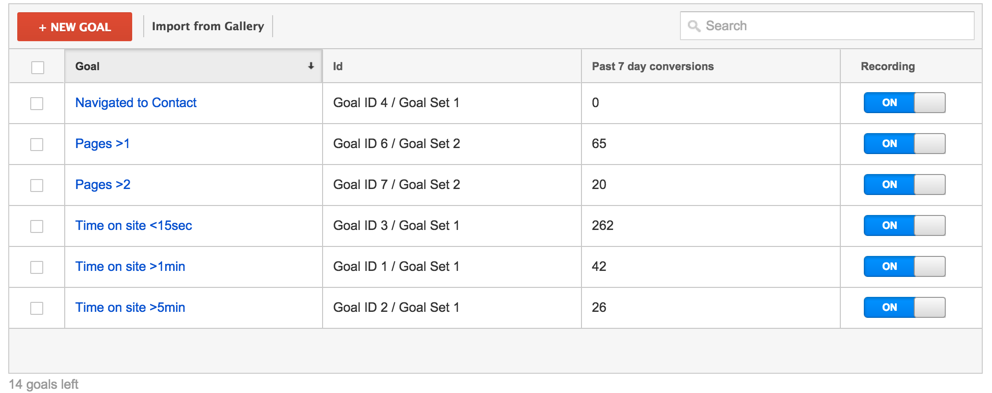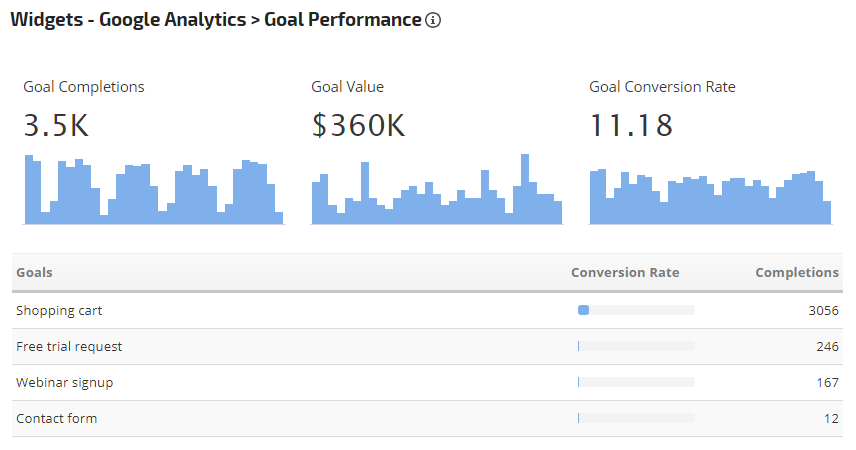Discover What Data Is Google Analytics Goals Unable to Track
Discover What Data Is Google Analytics Goals Unable to Track
Blog Article
Discover the Limitations of Google Analytics Goals: Introducing the Information Types That Remain Untrackable
As services significantly rely on data-driven decision-making, recognizing the limitations of devices like Google Analytics becomes extremely important. While Google Analytics Goals deal important understandings right into customer communications, there exist information types that thwart monitoring, positioning difficulties to a detailed understanding of customer behavior.
Incomplete Customer Journey Tracking
Insufficient individual trip tracking within Google Analytics can impede the capacity to precisely assess user behavior. When the customer journey is not totally tracked, there are gaps in the information that stop a thorough understanding of how individuals engage with an internet site. This absence of understanding can bring about missed out on opportunities for optimization and improvements to the individual experience.
One typical concern with incomplete user journey tracking is the inability to see the full path that individuals take before completing an objective or leaving the website. Without this details, it is testing to recognize where users might be coming across obstacles or friction points that stop them from transforming. Furthermore, insufficient monitoring can cover the effect of specific advertising initiatives or website adjustments on user habits.
To resolve this limitation, it is essential to establish correct monitoring mechanisms within Google Analytics to record the entire user journey. This might entail establishing up occasion monitoring, objective funnels, or using tools like Google Tag Manager to make sure that no crucial interactions go unrecorded. By gaining a comprehensive sight of the user trip, website proprietors can make more informed choices to improve user involvement and drive conversions.
Attribution Challenges
Navigating through attribution difficulties in Google Analytics requires a complete understanding of exactly how various touchpoints contribute to the general conversion process. Acknowledgment difficulties occur from the intricacy of modern-day consumer trips, where customers interact with multiple channels before converting.
One usual acknowledgment difficulty is the trouble in associating conversions to the correct resource, particularly in situations where individuals interact with numerous networks before converting. This can cause errors in figuring out which advertising and marketing efforts are driving one of the most conversions. Additionally, cross-device tracking postures one more attribution challenge, as individuals often switch over between devices throughout their trip, making it testing to track their interactions perfectly. Online marketers should very carefully translate and evaluate attribution data to make educated decisions and optimize their advertising methods properly.
Offline Conversions
Provided the challenges connected with connecting conversions precisely in online channels, the dimension of offline conversions provides a significant chance for marketing experts looking for a more thorough understanding of their clients' trip. Offline conversions refer to activities that consumers take in the physical globe, such as making acquisitions in brick-and-mortar stores or over the phone, attending events, or involving with published products - what data is google analytics goals unable to track. These conversions are essential for companies that operate both online and offline, as they supply important insights right into the performance of advertising projects throughout different touchpoints
Tracking offline conversions commonly posed a significant difficulty for online marketers, as it was challenging to link these activities back to certain online interactions properly. With improvements in innovation, such as the combination of CRM systems, distinct identifiers, and promo code codes, services can currently link the void in between online and offline data to get a much more all natural sight of client behavior. By efficiently measuring offline conversions, online marketers can maximize their strategies, designate resources extra successfully, and ultimately boost the overall consumer experience.
Cross-Device Tracking
Cross-device monitoring plays a critical duty in recognizing the interconnected nature of consumers' review electronic communications throughout multiple tools. In today's omnichannel globe, where users seamlessly switch over between smartphones, desktops, and tablets, tracking their behavior across these gadgets is important for marketers to get a comprehensive view of their client journey.

In addition, privacy concerns and policies such as GDPR and CCPA have additionally complicated cross-device tracking. With individuals demanding more control over their data and boosted constraints on tracking technologies, marketing professionals need to find privacy-compliant and cutting-edge methods to attach customer communications across gadgets.
Dynamic Material Engagement
Comprehending individual involvement with dynamic web content is essential in optimizing electronic marketing techniques for boosted audience communication. Dynamic material describes internet site components that change based upon user habits, choices, or other factors, offering a customized experience. Tracking customer communications with vibrant material positions difficulties for conventional analytics devices like Google Analytics.
While Google Analytics can track standard communications like clicks and web page views, it may struggle to capture more nuanced interactions within dynamic material. what data is google analytics goals unable to track. Metrics such as time spent on particular dynamic components, hover actions, or communications within pop-ups are frequently not easily quantifiable utilizing standard tracking approaches. This constraint impedes marketing experts' capacity to completely realize exactly how users are involving with vibrant material and tailor their strategies appropriately

Conclusion
Finally, Google Analytics objectives have constraints in tracking insufficient customer journeys, connecting conversions properly, capturing offline conversions, tracking cross-device interactions, and measuring dynamic content interaction. These restrictions highlight the value of exploring additional tracking techniques and devices to obtain a more comprehensive understanding of customer actions and conversions past what Google Analytics can offer.
While Google Analytics Goals offer valuable understandings right into customer communications, there exist data kinds that avoid monitoring, posing obstacles to an extensive understanding of user habits.Insufficient customer journey monitoring within Google Analytics can prevent the capability to properly assess individual behavior. When the individual trip is not home totally tracked, there are gaps in the data that prevent a detailed understanding of just how individuals interact with a web site.One usual concern with incomplete customer journey tracking is the failure to see the full course that customers take in the past finishing an objective or leaving the website. By obtaining a detailed sight of the user journey, site proprietors can make even more informed choices to improve customer interaction and drive conversions.
Report this page